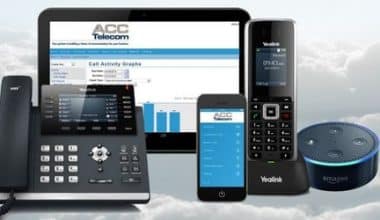The process of assessing a system or its components to see if it complies with predetermined requirements or not is known as a quality assurance test. Simply said, software quality assurance is the process of carrying out a series of operations to find discrepancies, mistakes, and faults that go against the specifications. In this post, we’ll go through software quality control processes, the process used to test for quality assurance, and the duties of a call center quality assurance engineer.
What is Quality Assurance (QA)?
Quality assurance (QA) Assuring that a company is giving its clients the best product or service. QA Testing is another name for it.
Software quality assurance appears to be solely concerned with assessing software’s functionality, performance, and adaptability; however, software quality assurance also considers the method used to create, test, and distribute the software.
Software development’s life cycle, which entails requirements management, software design, coding, testing, and release management, is the focus of software quality assurance.
Quality Assurance Software Test
A technique to guarantee the quality of software products or services offered to clients by a company is known as a quality assurance software test. The goal of quality assurance is to increase the efficiency and effectiveness of the software development process by the quality standards established for software products.
How to Conduct a Full Software Quality Assurance Test
The PDCA cycle, often known as the Deming cycle, is specified in the quality assurance system. This cycle’s phases are:
- Plan
- Do
- Check
- Act
To guarantee that organizational processes are periodically assessed and improved, the aforementioned procedures are repeated. Let’s examine the QA Process phases mentioned above in more detail:
- Plan – Organizations should plan, set process-related goals, and identify the processes needed to create a high-quality final product.
- Do – process development and testing as well as “do” process adjustments.
- Check – Check the procedures, make any necessary modifications, and make sure they achieve the predetermined goals.
- Act – A quality assurance tester should put into practice the essential steps to bring about process changes.
To make sure that the product is created and deployed according to the right methods, a business must utilize quality assurance. This lessens issues and mistakes in the finished result.
When Do Software Quality Assurance Tests Begin?
The cost and time required to build error-free software and deliver it to the client are reduced by testing at the appropriate moment. In a company that outsources software development, testing begins during the requirements-gathering phase and lasts until the software is deployed.
It also changes according to the development model employed, though. For instance, testing is carried out in the testing step of the waterfall paradigm. After each iteration, a test is run in an agile approach. After the project, the application is tested once more.
Call Center Quality Assurance Software
Any modern customer service team needs call center quality assurance (QA) software. The days of challenging QA spreadsheets are over. Teams that want to improve the caliber of their services are exchanging them for CRM-integrated software.
Offering high-quality service has never been more crucial given how brightly the customer service sector has been embraced. To gain a competitive edge, call center teams are now spending more money than ever on QA software.
Methods for Call Center Quality Assurance Software
Depending on whether you use software to handle the majority of the QA and quality management work for you, there are two sorts of approaches for conducting call center quality assurance.
#1. Manual call center QA with sampling
It is frequently hard to evaluate and monitor each call handled by each agent if your call center’s quality assurance program is carried out manually. Instead, you’ll probably collect representative samples at different times and compare those to the objectives you’ve selected. Here, the objective would be to look for teachable moments and identify potential growth areas for agents. You might also rely on post-call surveys that ask clients for their opinions.
#2. Unsampled automated call center quality assurance
Using a quality management software suite is the fastest, more contemporary, and most transparent approach to conducting call center quality assurance. Without relying on samples, a software solution with AI and machine learning built in can measure performance in a uniform and objective manner throughout every single encounter.
The Best Ways to Boost Call Center Performance
Looking to improve call center quality assurance, quality control, and agent performance to increase customer satisfaction? Here’s how to create a strong call center quality assurance framework:
#1. Include quality assurance insights in your plan of action.
When you look at quality assurance through the lens of strategic management, it can be so much more than just checking off boxes. The performance rating for that particular customer care agent is often the only one affected when quality assurance software indicates that there is a problem with the way a call was handled. However, QA experts have a unique perspective on how coaching sessions might be advantageous for the entire team, and this can be incorporated into your overall strategy.
#2. List your goals.
It’s generally advantageous to start any new endeavor by assembling key stakeholders and determining your goals. In this situation, quality monitoring may be something you want to start doing to help alter key performance measures like customer turnover. It might even be more crucial to recognize and honor outstanding performance. Whatever the case, you should base the call center QA framework you set up on these fundamental goals.
#3. Observe frequently
Every single client interaction acts as a fresh piece of data to learn from, causing call center performance to be flexible and evolve constantly. Therefore, it’s crucial to avoid thinking of call center QA as a one-off task. Instead, monitoring should take place as often as possible and in-depth.
#4. Automate the QA process in the call center
To that aim, automating the procedure with quality management software will significantly enhance your QA efforts. Using a specialized software solution in place of manual monitoring has many advantages, including automated scoring, real-time analytics, and unbiased benchmarking.
#5. Track sentiment
Automated QA solutions enable AI-powered natural language processing in addition to aiding in real-time and mass-scale monitoring. The greatest method to understand what your customers are feeling and where pain points are producing friction on their buying path is to analyze calls and other customer interactions for sentiment, effort, and emotion. This is by far the fastest and most effective way to do this.
#6. Gamify processes and pay employees
Call center quality assurance is a wonderful approach for call centers to identify their top-performing agents and draw attention to those who require coaching sessions. Its main goal isn’t merely to increase customer happiness.
Top Picks For Call Center Quality Assurance Software
It’s crucial to choose the best call center quality assurance software for your staff. Your new tool will enable you to provide the greatest level of service with the least amount of effort possible with careful planning and some patience.
- Kaizo
- Scorebuddy
- Miuros
- Klaus
- MaestroQA
Software Quality Control
Software quality control is a validation activity that determines whether the developed software product’s quality satisfies client needs, with exceptions, or is appropriate for its intended use, i.e., to determine whether the program was created correctly or not. This procedure focuses on the product to identify the flaw and raise the caliber of the program that has been produced. Software quality control includes testing the software product by running the application code.
Software Quality Control Activities
The resources, development process, and software product are the primary topics covered by the software quality control process. The PDCA (Plan, Do, Check, Action) method is used. Two main tasks, together with a few supporting activities, make up the software quality control process.
One method of static testing or document verification used to check for errors in software documentation is the review activity. To enhance the development process carried out without program execution, it is process-oriented. It includes the requirement paper and the design evaluation. Within the software development life cycle process, it has several review activities like requirements, design, coding, test plan, test cases, and deployment.
#2. Testing activities (QC)
The testing procedure is one sort of dynamic validation that looks for flaws in the software program. It is product-oriented and uses program execution to improve the quality of the software product. Within the software development life cycle process, product testing is the primary component and includes various testing activities like unit, integration, system, acceptance, release, and maintenance testing phases.
Software Quality Control Standards
To evaluate and explain the quality of software-developed products, there exist certain ISO standards. The software development life cycle (SDLC) model of the development process is followed by the international standard in software quality control, number 29119, which was proposed by the ISO/IEC/IEEE. It generally consists of five international levels of software quality control (QC) standards and a few substandard to examine the application’s process and product levels.
These are what they are:
- International Software QC Standards
- Auxiliary Software QC Standards
Software Quality Control Techniques
The IT organization uses quality control as a method to create software products of the highest quality and to advance both organizational productivity and software product goals. The PDCA (Plan Do Check Action) technique is one of the best methods for software quality control, however, there are many different techniques/methods available.
PDCA Model
The plan-Do-Check-Action model is what it’s called. It is one of the most straightforward methods for the software development process, allowing for quality control of the program right from the start. The quality control of the software program is influenced by factors including the product or application, processes, and resources.
Quality Assurance Software Engineer
The maximum level of quality can be achieved when developing and releasing software products, according to a software quality assurance (SQA) engineer. SQA engineers frequently participate in every stage of the software development life cycle, from gathering requirements and designing to testing and releasing. To make sure that quality standards are met at every step of development, they collaborate closely with software developers and other stakeholders.
SQA engineers are in charge of generating and carrying out test plans and test cases, as well as developing and implementing software testing approaches and strategies. To find and report software flaws, they employ a variety of testing tools and methods, including manual and automated testing. They also work to make sure that software products adhere to regulations such as ISO, CMMI, or FDA guidelines and other established quality standards and compliance criteria. To make sure that software meets quality and usability standards, SQA engineers may also participate in code reviews, performance testing, and documentation reviews in addition to testing.
What does a Software Quality Assurance Engineer do?
Because they are in charge of ensuring that software products meet the highest standards of quality, dependability, and usability, software quality assurance engineers are essential to the software development process. They carry out a variety of testing procedures to spot flaws, make sure software functions properly, and confirm that it satisfies user needs.
Without SQA engineers, software products might be deployed with serious flaws or usability problems that could have a detrimental effect on users, harm the company’s reputation, and cause large financial losses. Software quality assurance engineers ensure that users receive software products that have few flaws, are highly reliable, and provide a great user experience.
Types of Software Quality Assurance Engineers
Software quality assurance engineers come in various types, each with unique duties and specialized talents. Typical subcategories of SQA engineers include:
- Manual Testers
- Automation Testers.
- Performance Testers
- Security Testers
- Mobile Testers
- Quality Assurance Managers
Difference Between Quality Control (QC) and Quality Assurance (QA)
Confused as to what sets QA, QM, and QC apart? In essence, quality assurance and control are tactical, check-the-box assessments of procedures, whereas quality management refers to the larger, more comprehensive themes, trends, and methods for risk assessment inside an organization.
And whereas quality control focuses on error prevention, quality assurance typically focuses on how procedures are carried out or services are delivered, such as call center agent performance. Typically, this is done through the development and ongoing assessment of QC policies.
Your quality assurance department will typically have a “checklist” of criteria to measure services against. For instance, script compliance and client success would be key performance indicators in a call center.
On the other hand, quality control is concentrated on the assessment and management of quality for products, typically during the development phase.
What Is Quality Assurance in Simple Terms?
A collection of procedures known as quality assurance (QA) is used to make sure that a product or service complies with all specifications and quality standards.
What Are the Software Quality Assurance Types?
The Various QA Software Testing Methods:
- Unit Testing.
- Component Testing.
- Integration Testing.
- End-to-End Testing.
- Performance Testing.
- Regression Testing.
- Sanity Testing.
- System Testing.
What Are 3 Examples of Quality Assurance?
Process audits, process standards, process documentation, and process checklists are a few examples of quality assurance practices.
What Are the 3 Cs of Quality Assurance?
The 3Cs, or Comprehensive Services, Complete Certifications, and Continuously Updated Strategies are qualities that your quality management partner should have.
What Are the 7 Pillars of Quality Assurance?
Numerous elements that make up the concept of quality of care can be categorized under the following seven categories: efficacy, effectiveness, efficiency, optimality, acceptability, legitimacy, and equity.
What Are the 4 Focus Areas of Quality Assurance?
An overview of our methodology for QA and testing in 4 important areas is provided below —DevOps, Cognitive QA, Cloud, and Test Data Management.
Conclusion
The goal of quality assurance is to ensure that the finished product is usable. Processes and standards should be followed by any organization. It focuses mostly on the caliber of the goods or services we offer to clients while or after software deployment.
Related Articles
- QUALITY ASSURANCE VS QUALITY CONTROL: Differences And Examples
- QUALITY ASSURANCE: Meaning, Process, Software, Engineer & Difference
- QA ENGINEER: Definition, Job Description, Salary, Skills & Software
- QUALITY ASSURANCE SOFTWARE: Top Software, Engineer, Test, Salary & Development
- FINANCIAL AUDIT: Meaning, Salary, Statements, Comparisons & All You Need






